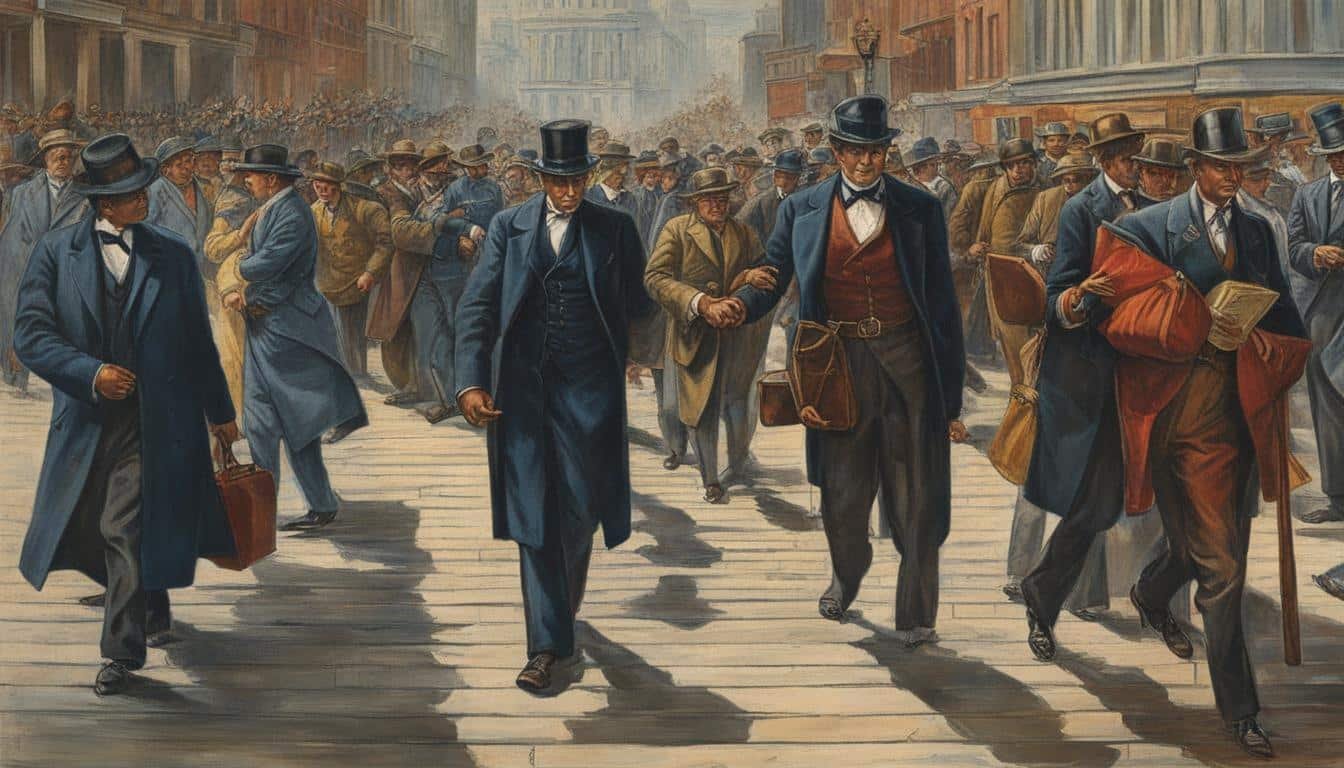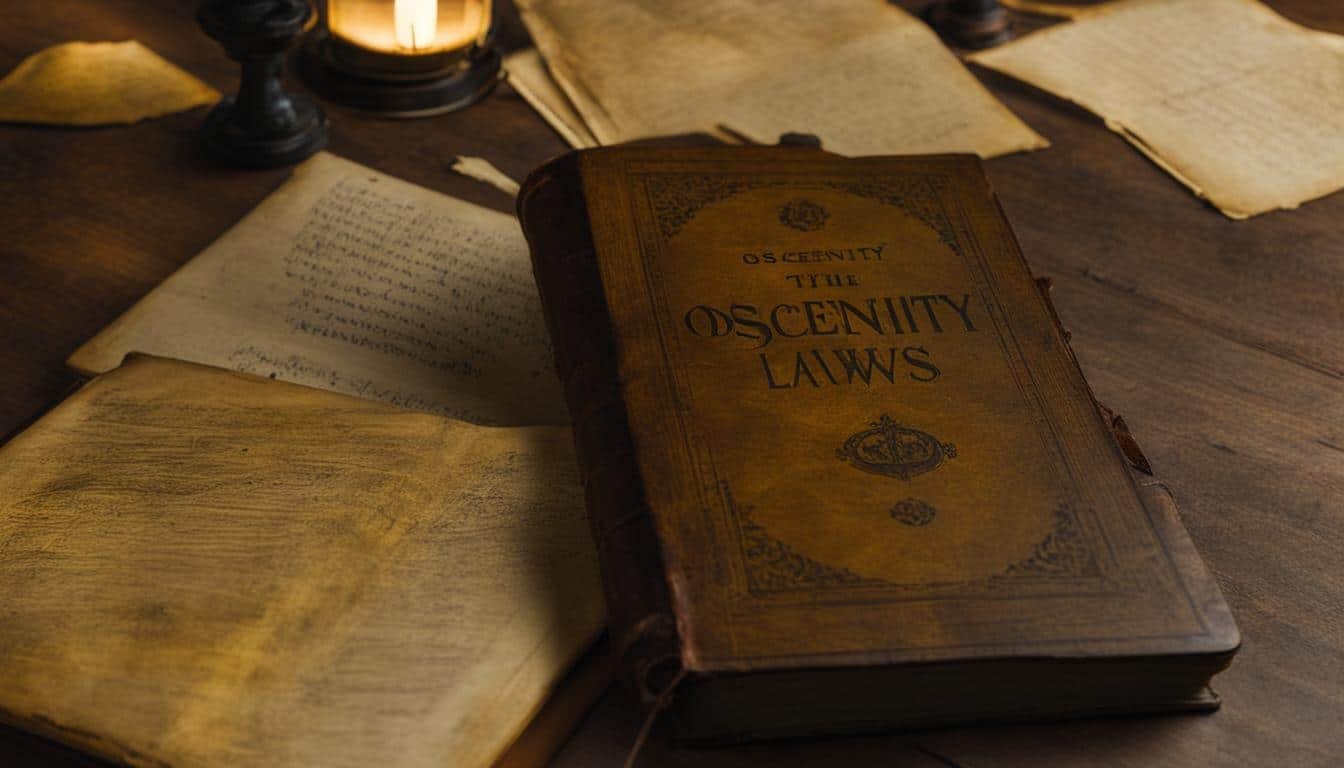Over the course of history, the regulation of obscenity and indecency in the United States has undergone significant changes. From early rulings that shaped the understanding of obscenity to landmark Supreme Court cases, the evolution of indecency laws reflects the changing social and cultural landscape. Understanding the historical development of obscenity regulations is crucial in examining the current state of these laws and predicting their future.
Key Takeaways:
- Changes in obscenity crime laws have occurred over time in the United States.
- The Supreme Court case of Miller v. California established the “Miller test” for determining obscenity in 1973.
- Earlier rulings, like Roth v. United States in 1957, shaped the understanding of obscenity as material lacking redeeming social value.
- Obscenity laws gained prominence in the mid-19th century, with laws such as the 1873 Comstock Act prohibiting the mailing of “obscene” material.
- The public perception of obscenity has shifted over time, with current concerns focused largely on child pornography.
Historical Origins of Obscenity Regulation
Obscenity regulation in America has a long and complex history that can be traced back to the mid-19th century. During this time, communities regulated their own behavior, but as society shifted towards more centralized governance, the need for standardized regulations became apparent. One significant development in the evolution of obscenity laws was the 1873 Comstock Act.
The 1873 Comstock Act was a federal law that made it illegal to send “obscene,” “lewd,” or “lascivious” material through the mail. This legislation was a response to growing concerns about the dissemination of explicit content and sought to protect the morality and decency of society. The Comstock Act marked a turning point in obscenity regulation, as it established a clear boundary between what was considered acceptable and what was deemed obscene.
Obscenity disputes further intensified around the turn of the 20th century, as advancements in technology, such as films and an expanding press, challenged societal norms and blurred the boundaries between public and private. This period marked the end of the Victorian era, and the anxieties surrounding moral decay and the preservation of traditional values influenced the regulation of indecency.
Emergence of Victorian Era Obscenity Disputes
The Victorian era was characterized by a strict moral code, which deemed any discussion or depiction of sexuality as immoral and offensive. However, as societal attitudes began to shift, there was a growing demand for greater artistic expression and a relaxation of repressive social norms. This clash of values led to numerous disputes over what constituted obscenity during this period.
| Year | Obscenity Dispute | Outcome |
|---|---|---|
| 1888 | Publication of “The Pearl” magazine | Prosecuted for obscenity, but received public support for its literary merit |
| 1890 | The Pianograph Society’s exhibition of nude paintings and sculptures | Controversial, but not prosecuted due to ambiguous laws and public fascination |
| 1896 | “Fanny Hill: Memoirs of a Woman of Pleasure” published | Prosecuted for obscenity, but ultimately became a celebrated work of literature |
“The Victorians grappled with the tension between their desire for artistic freedom and their deeply ingrained moral values. This resulted in a series of obscenity disputes that challenged societal norms and laid the groundwork for the ongoing evolution of obscenity regulation in America.”
These historical origins, marked by the 1873 Comstock Act and the emergence of Victorian era obscenity disputes, set the stage for the ongoing development and refinement of obscenity regulation in the United States.
Notable Examples of Evolving Obscenity Standards
Throughout history, there have been notable examples that illustrate the changing standards of obscenity. In the late 19th century, short films like “Carmencita” and “The Kiss” were considered shocking and even banned in some places due to their depiction of indecent behavior. These early examples of obscenity regulation demonstrate society’s evolving views on what is considered obscene.
“Carmencita,” directed by William K.L. Dickson in 1894, caused a sensation with its sensual dance performed by Spanish dancer Carmencita. The film depicted movements that were considered provocative at the time, leading to its ban in certain areas. Similarly, “The Kiss,” directed by Thomas Edison in 1896, depicted a couple sharing an intimate kiss, which was considered scandalous and led to its censorship in some places.
Even literature was not exempt from censorship, as seen in the case of James Joyce’s Ulysses. Published in 1922, Ulysses faced legal challenges and was deemed obscene in many countries, including the United States. It was not until 1933 that a U.S. court ruled that Ulysses was not obscene, making it legally available in the country. The controversial nature of Ulysses exemplifies the challenges faced in defining and regulating indecency in various forms of media.
Table: Films and Publications Considered Obscene
| Year | Film/Publication | Reason for Consideration as Obscene | Outcome |
|---|---|---|---|
| 1894 | “Carmencita” | Sensual dance and provocative movements | Banned in certain areas |
| 1896 | “The Kiss” | Intimate on-screen kiss | Censored in some places |
| 1922 | “Ulysses” by James Joyce | Explicit and controversial content | Deemed obscene in many countries, including the U.S. |
These examples highlight the subjective nature of obscenity standards throughout history. What was once considered indecent or obscene may no longer be viewed as such today. Society’s evolving attitudes and changing cultural norms continue to shape the regulation of obscenity, raising questions about what should be considered acceptable or inappropriate in the realm of media and art.
Current Trends in Obscenity Regulation
In the current state of obscenity regulation in the United States, there has been a notable shift in focus towards the prosecution of child pornography. Over the years, there has been a decrease in obscenity prosecutions overall, with law enforcement agencies prioritizing the protection of vulnerable populations. The recognition of the harm inflicted upon children has led to a heightened emphasis on combating the production, distribution, and consumption of explicit material involving minors.
While the crackdown on child pornography remains a top priority, it is important to acknowledge that trends in obscenity regulation can evolve alongside societal attitudes and technological advancements. As the internet continues to shape the way we consume media, new challenges arise for lawmakers and law enforcement agencies. The future of obscenity regulation may see a shift towards granting consenting adults more autonomy in deciding what they choose to read, watch, and engage with, balanced with efforts to protect those who are most vulnerable.
Law professor Kevin Saunders suggests that the national mood in the United States is gradually leaning towards a potentially more relaxed approach to censorship. The focus on protecting vulnerable populations, particularly children, is likely to persist, but there may be a greater emphasis on individual freedoms and the right to access explicit content as long as all parties involved are consenting adults. The evolving landscape of obscenity regulation will continue to be shaped by societal changes and reflect the ongoing dialogue between personal freedoms and societal values.
Source Links
- https://time.com/4373765/history-obscenity-united-states-films-miller-ulysses-roth/
- https://scholarship.law.wm.edu/cgi/viewcontent.cgi?article=3248&context=wmlr
- https://scholarship.law.unc.edu/cgi/viewcontent.cgi?article=1267&context=falr







